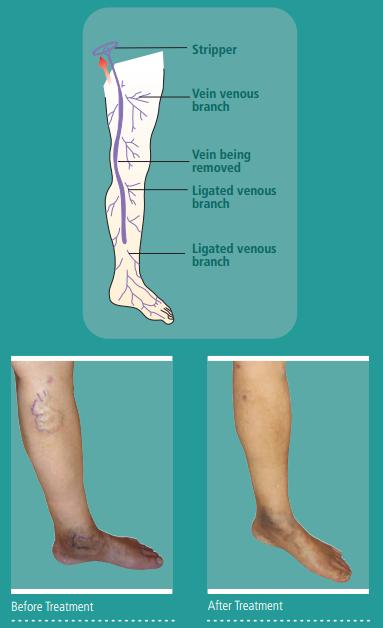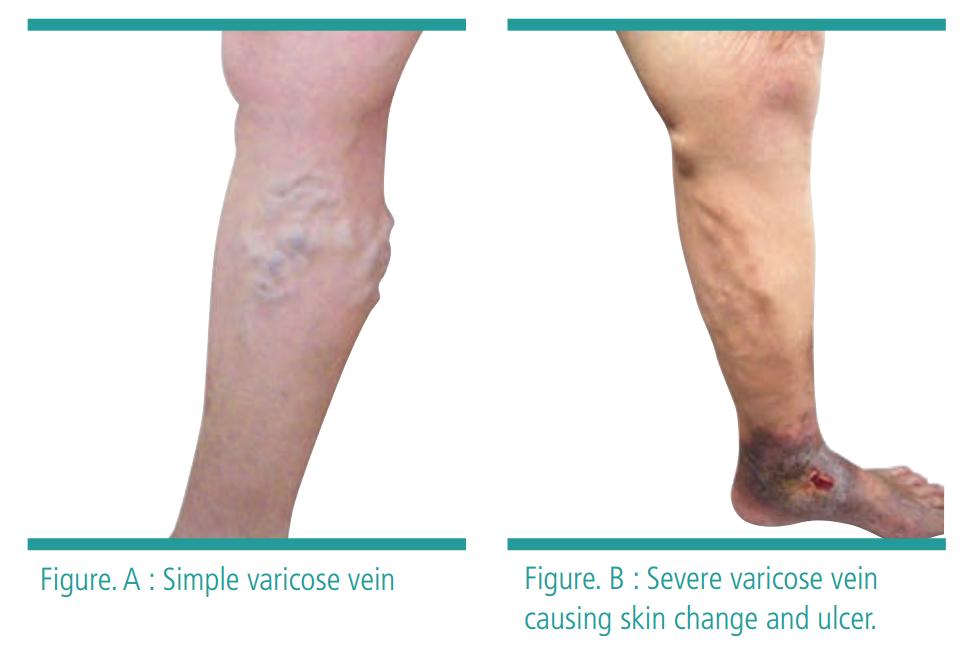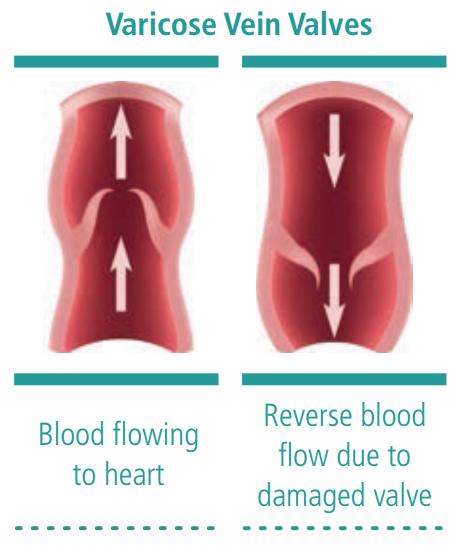The goals of treatment for varicose veins are to reduce symptoms and prevent long term complications. Some treatment options include -
- Non-surgical: Exercise, wearing compression stockings and elevating legs
- Surgery: Ligation and Stripping (Open Surgery)
- Endovenous Laser Treatment or Radiofrequency Ablation
- Laparoscopic Perforator Surgery (Keyhole Surgery)
Litigation & Stripping
Litigation is done at the main junction between deep and superficial vein with a faulty valve. Small incisions are then made over the varicose vein to remove them. If several valves along the vein are heavily damaged, the whole vein is usually removed by stripping.
Endovenous Laser Treatment (EVLT) & Radiofrequency Ablation (RFA)
EVLT and RFA are both done under local anesthesia. It works by using laser or radiofrequency energy to heat the vein from inside which causes it to seal shut and disappear.
What to expect after surgery?
Vein litigation and stripping are done as day surgery under regional or general anesthesia. EVLT/RFA can be done under local anesthesia. The leg will be bandaged with crepe and stockings for two weeks after the operation. Most often, you can return to work within a few days. After two weeks, you can resume normal leisure and recreational activities.



















